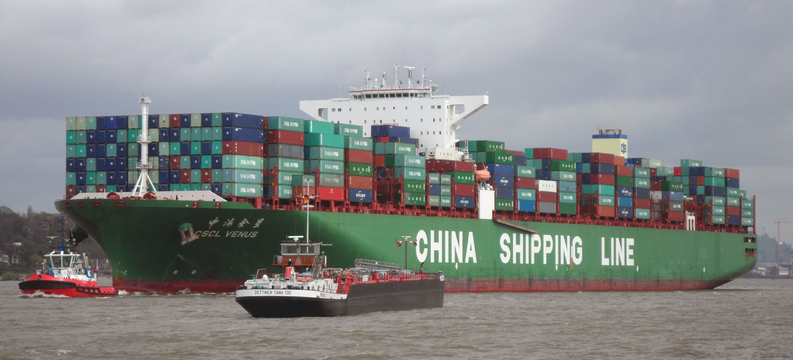
Will Colombia’s New President Deliver on His Promises?
Iván Duque, a conservative former senator, on Sunday won Colombia’s presidential runoff election. What does it mean for the country?
A Daily Publication of The Dialogue
China announced May 13 that it would increase tariffs on nearly $60 billion worth of U.S. products, in retaliation for the United States’ move to boost tariffs on $200 billion of Chinese goods to as much as 25 percent. To what extent are escalating tensions between the United States and China affecting global supply chains and the role of Latin American and Caribbean nations in them? Which countries in the region stand to gain or lose the most from disruptions caused by the trade conflict, and what should they do to prepare? As goods coming out of China become more expensive and companies consider sourcing their products elsewhere, will Latin America be able to compete, or will it lose out to regions that offer cheaper manufacturing, such as Southeast Asia?
Guillermo Malpica, head of the Mexican Ministry of Economy’s trade and NAFTA office in Washington: “The escalation of tariffs and retaliation between the United States and China could represent some short-term gains for Mexico and other Latin American countries by allowing them to sell products to one or both of them more competitively, due to an increase in the prices of some imports for Chinese or American consumers. But this depends on the specific product, the channels of distribution, the ability to supply the amounts needed and on how much the cost increase for Chinese and U.S. products transfers to the end consumer. Any gains could be temporary, depending on how long the conflict lasts and how well Latin American products fare in those new destinations. Additionally, it is important to mention that this escalation of measures also affects other products in Mexico and Latin America because of the potential increase in costs for specific inputs from China and the United States that are affected by the tariffs. The net effect is uncertain. Moreover, the fact of having a set of unilateral trade policy decisions made by China and the United States, even if it is for the correct reasons, erodes the role of the multilateral trade system as a natural place to solve systemic disputes.”
Riley Walters, policy analyst for Asia economy and technology at The Heritage Foundation’s Asian Studies Center: “The immediate cost for the global business community from ongoing U.S.-China tensions is the uncertainty it creates for making business decisions. Most businesses aren’t sure how to make appropriate investment decisions because no one knows how the U.S.-China dispute will continue. The goods coming out of China will become more expensive whether trade tensions with the United States continue or not. Rising labor costs and an uncertain economic environment are driving up costs in China, meaning countries in Latin America will have to compete with Southeast Asia nonetheless. The costs of tariffs drive up prices even more for certain goods as it becomes expensive to do business between the United States and China. Over time, some companies will look at leaving the United States or China to find alternative sources for investment and avoid bilateral tariffs. Countries looking to capitalize on these movements should seek to improve their own domestic investment environment. Nothing brings in investment like a stable environment that’s free from excessive government regulation.”
Andrew Rudman, managing director at Monarch Global Strategies: “The Trump administration’s tariffs on steel and aluminum, washing machines, solar panels and $250 million in Chinese-made exports to the United States have already disrupted global supply chains and trade more generally. An escalation of Sino-U.S. trade tensions will exacerbate these disruptions with largely negative implications for U.S. consumers. Yet disruption creates opportunities. Latin American and Caribbean nations may see the competitiveness of their exports to China and Europe enhanced, while U.S. competitiveness is reduced due to retaliatory tariffs on agriculture and other sensitive products. Brazilian soy and Argentine wheat are but two commodities that may see increased sales in light of the breakdown in U.S.–China talks that reportedly included additional Chinese purchase commitments. The U.S. tariffs on China are intended to encourage the movement of manufacturing from China to the United States. In reality, the movement may be to other low-cost producers, including in Latin America. For instance, Politico recently cited Hasbro and GoPro as two firms that left China, not for the United States, but for Mexico. A survey conducted by the American Chamber of Commerce China and American Chamber of Commerce Shanghai found that ‘just over 41 percent of companies said they are considering or had already relocated manufacturing outside of China, with Southeast Asia and Mexico as the top destinations.’ Latin America’s proximity to the United States already provides a competitive advantage over Asian manufacturers for industries heavily reliant on just-in-time production. These advantages could be amplified through adoption of business-friendly measures, such as the customs single window and simplification of tax and regulatory structures. Efforts to enhance the rule of law and eliminate corruption as promised, for example, by Presidents López Obrador and Bolsonaro, could be bolstered by the potential to attract new investment in manufacturing.”
Fernando de Mateo, coordinator of the diploma on trade negotiations at El Colegio de México and former Mexican ambassador to the World Trade Organization: “The trade war between the United States and China is like a nutcracker, the nut being the multilateral trading system. On the one hand, the United States has repeatedly violated WTO rules by applying what most people believe are illegal trade measures, and the ones retaliating have also done so by applying measures without going first to the WTO. The effect has been that value chains have shortened, with China domestically adding more value to its products. U.S. multinational enterprises have also shortened global value chains, but not necessarily bringing them back home. A number of processes have been transferred to Latin America, particularly to those countries already integrated in the global value chains. According to the Peterson Institute, the country to be most favored in relative terms (seven percentage points above the current value of exports) is Mexico. The second most favored Latin American country is Costa Rica. The danger for Mexico is starting to increase protectionist measures, with a direct impact on trade costs. Then, U.S. companies will go somewhere else, particularly to Vietnam, Malaysia and Thailand, among others. As for the rest of Latin America, many countries have China as their main market. The more China becomes self-reliant, the more those countries will suffer in its exports. The reduction in the rate of growth of China’s GDP has already taken its toll on Latin American exports.”
The Latin America Advisor features Q&A with leaders in politics, economics, and finance every business day. The publication is available to members of the Dialogue's Corporate Program and others by subscription.
Iván Duque, a conservative former senator, on Sunday won Colombia’s presidential runoff election. What does it mean for the country?
Mexicans go to the polls on Sunday, July 1, for the country’s presidential, legislative and local elections. What can we expect?
Leftist Andrés Manuel López Obrador swept to victory Sunday in Mexico. What changes are in store?
 The Chinese container ship CSCL Venus is pictured above. // File Photo: Buonasera via Creative Commons.
The Chinese container ship CSCL Venus is pictured above. // File Photo: Buonasera via Creative Commons.

